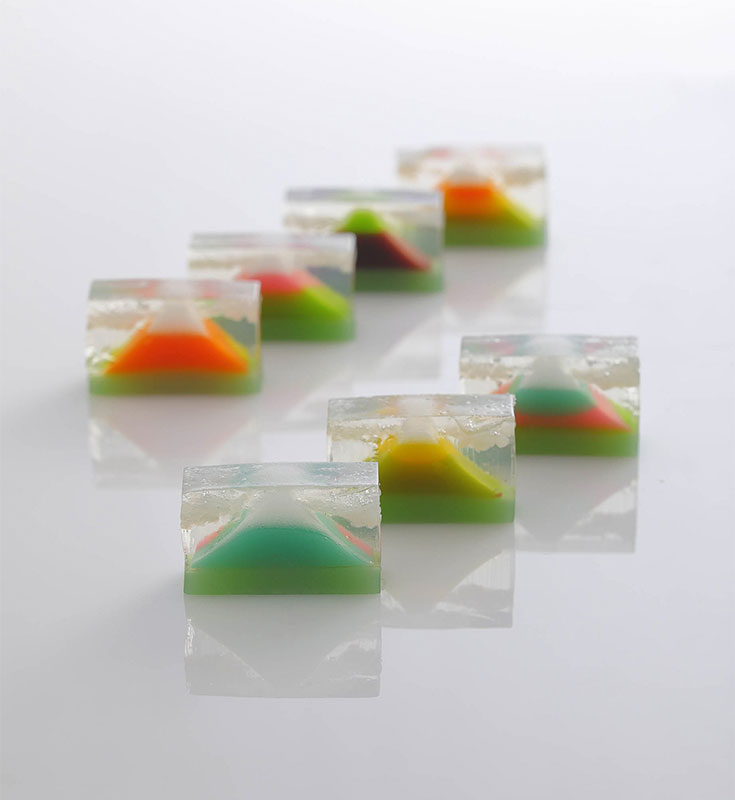niponica is a web magazine that introduces modern Japan to people all over the world.
2019 NO.27
 Tasty Japan: Time to Eat!
Tasty Japan: Time to Eat!

Yokan
A Traditional Japanese Sweet Winning New Acclaim for Its Sports Benefits
Photography: Koyama Sachihiko (STUH) Photo: photolibrary

Amanohara is a confectionery made from bean paste molded in the shape of Mount Fuji and agar that represents the sky. It was created using the elaborate techniques of the new YUI brand developed by Ryoguchiya-Korekiyo, a venerable confectionery manufacturer established 380 years ago.
Yokan is a well-known traditional Japanese confectionery made by mixing red bean paste with sugar and agar, boiling down the mixture and pouring it into molds to solidify. Typically, yokan is rectangular in shape, very dark reddish-brown (nearly black) in color, and dense. The lustrous translucent beauty of sliced yokan arranged on a dish once made renowned writer Tanizaki Junichiro (1886–1965) praise its “meditative” quality. Its strong sweet taste perfectly complements the bitterness of green tea.
Yokan was said to be introduced to Japan around the 15th century as part of the culture of Zen Buddhism. Initially, it was prepared by kneading azuki bean paste and kuzu root starch and steaming the mixture to make mushi-yokan (“steamed yokan”). The 19th century saw the arrival of a new type of yokan made with agar, called neri-yokan, and it remains the most popular type of yokan today. A variety of yokan confectionery can be seen throughout Japan—made not only with azuki bean paste but also with white kidney bean paste, sweet potato, chestnuts, and Japanese persimmon. Yokan also comes in various forms, such as in the shape of Mt.Fuji, a unique design made with the nagashi-komi (pouring-in) technique.
Made with large amounts of sugar and little water, neri-yokan keeps very well, which makes it a perfect refreshment to store and preserve. Moreover, neri-yokan is an easily-accessible source of nutrition beloved by mountaineers and sports enthusiasts. In recent years, a new type of yokan appropriately dubbed “sports yokan” was developed specifically to meet the needs of people who engage in sports. For instance, a product launched in 2012 by a well-established major confectionery manufacturer is made with seaweed salt containing minerals that athletes lose as they perspire when exercising over extended periods of time. Also, intake of sugar during workout may result in rapid fluctuations in blood sugar levels and eventually cause hypoglycemia. Sports yokan, on the other hand, reduces the risk of hypoglycemia because the sugar it contains is absorbed slowly by the body.
Another distinctive feature of sports yokan is its packaging. Each manufacturer is racing to come up with packaging that is easy to open even with one hand and keeps the hands clean, so as to distinguish their products as a convenient source of nutrition during exercise.
A traditional Japanese confectionery, yokan today has gained a reputation as a highly nutritious food, and is expected to diversify and expand its presence.





